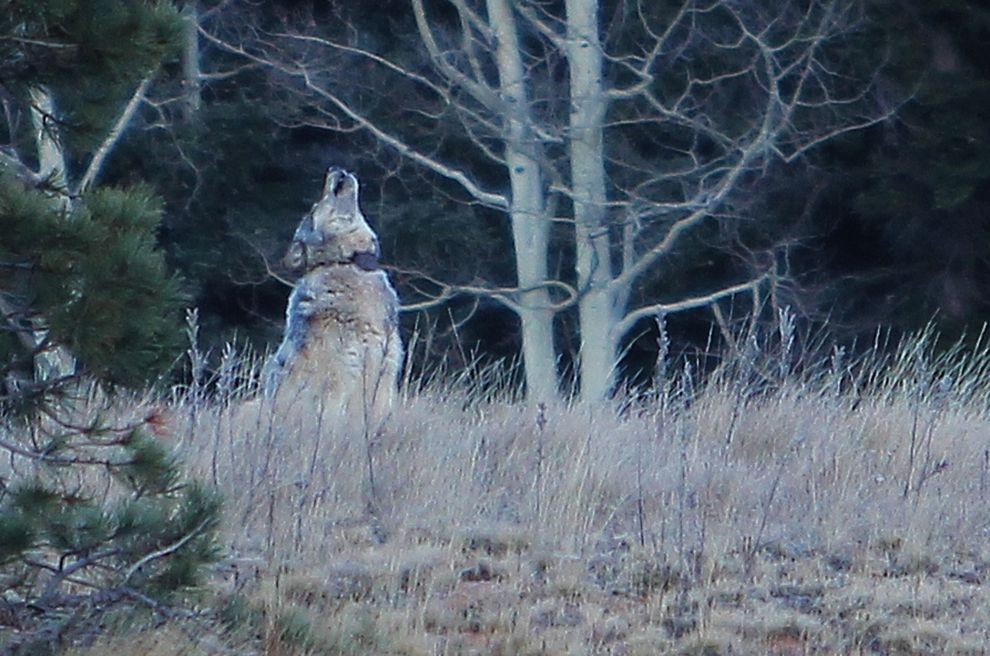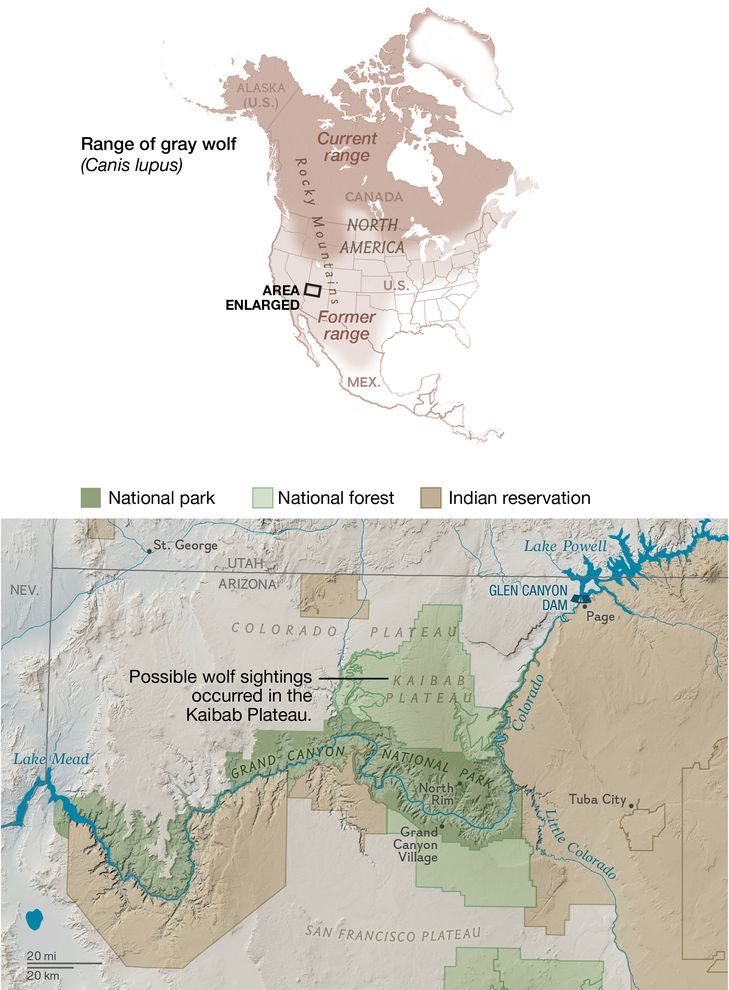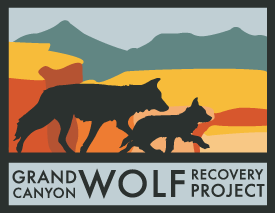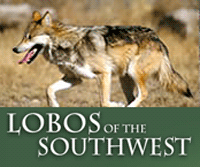National Geographic (Original) Posted on November 1, 2014 by Christine Dell'Amore
The endangered predator hasn't lived in the region since the 1940s. 
Efforts to track the animal spotted on Arizona's Kaibab Plateau in recent weeks have been unsuccessful so far.
The chase is on to identify the "wolflike animal" that's been spotted multiple times recently near the Grand Canyon's North Rim.
If the animal turns out to be a gray wolf, as some wildlife experts suspect—and hope—the sightings would mark the first time a gray wolf has been seen in the Grand Canyon area since the 1940s.
People nearly hunted the predator to extinction in the United States, where it had roamed across much of the country for centuries.
Several people have photographed the Grand Canyon canid, which is wearing some kind of collar, on Arizona's Kaibab Plateau in recent weeks, just north of Grand Canyon National Park, according to the U.S. government.
If it's not a gray wolf, it's likely a Mexican gray wolf, which is a rarer subspecies, or a wolf-dog hybrid, says Jeff Humphrey, public affairs specialist for the U.S. Fish and Wildlife Service's Southwest Region.
Any of those animals could wear a collar, but the mystery animal's collar looks similar to those used in the Northern Rocky Mountains, where the gray wolf was reintroduced in 1995, according to a FWS press release.
Based on photographs, the animal also does not appear to be a Mexican wolf—which is smaller than a gray wolf.
The only way to definitively identify it, Humphrey told National Geographic, is to analyze the DNA in its poop—which the agency is doing now.
Until the analysis is complete, the government is asking the public to treat the creature like a gray wolf from the Northern Rocky Mountains, which is an endangered animal with federal protection.
Based on their recent rebound—there are now 1,700 gray wolves roaming the West after their population had been limited to the upper Midwest for decades—the Fish and Wildlife Service proposed taking the species off the Endangered Species List in 2013.
"Our first area of concern is the welfare of the animal," Humphrey said, especially since the Grand Canyon is heavily visited.
Super Roamers
Gray wolves are legendary for traveling long distances, and it's feasible that an animal could have traveled from its home in Wyoming or another Rocky Mountain state through Utah and into Arizona, experts say.
At about two or two-and-a-half years of age, young wolves set out seeking new territory, often roaming far from their homes, said National Geographic Young Explorer Jay Simpson.

For several months this year, Simpson tracked a lone gray wolf, dubbed OR-7, through Oregon into California as part of the Wolf OR-7 Expedition.
Wearing a GPS collar, the young male traversed over 1,200 miles (1,931 kilometers) to become the first and only documented free-roaming wolf in California in nearly 90 years, according to the expedition website.
Based on the attention that the Fish and Wildlife Service is putting on the case, Simpson suspects the Grand Canyon animal is a gray wolf.
"It's really exciting in the sense that wolves continue to display remarkable abilities—they continue to disperse to areas where they previously lived."
If the Grand Canyon animal is a gray wolf that's wearing a GPS collar, the collar must be out of batteries, since Humphrey said efforts to track it have been unsuccessful.
Simpson said collaring is crucial for understanding animal behavior—for instance, if the wolf did have a functional collar, it would reveal "invaluable data" about where it has been, including how the animal negotiated various terrain—and threats—through the Northern Rockies.
Photo by AZ Game and Fish Department. Map by National Geographic STAFF. SOURCE: NATIONAL PARK SERVICE; U.S. FISH AND WILDLIFE SERVICE; USGS





